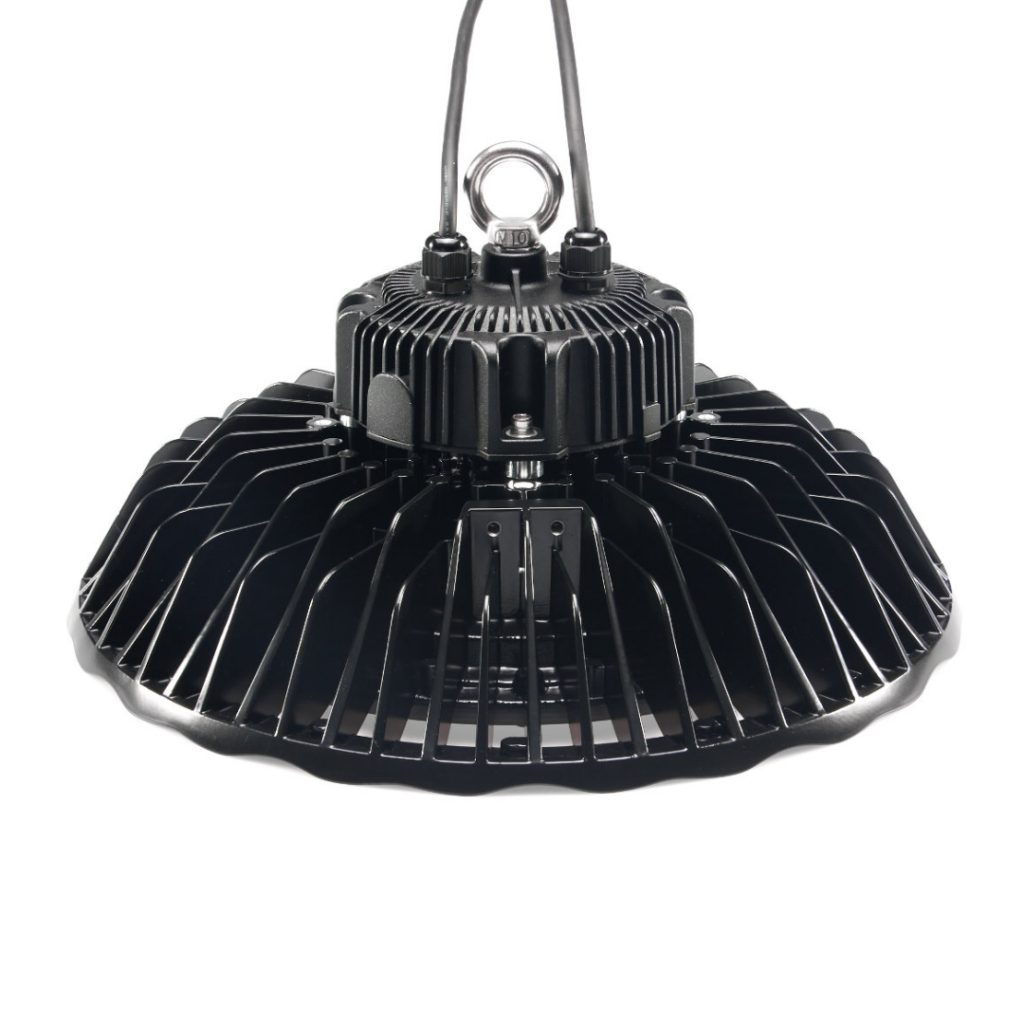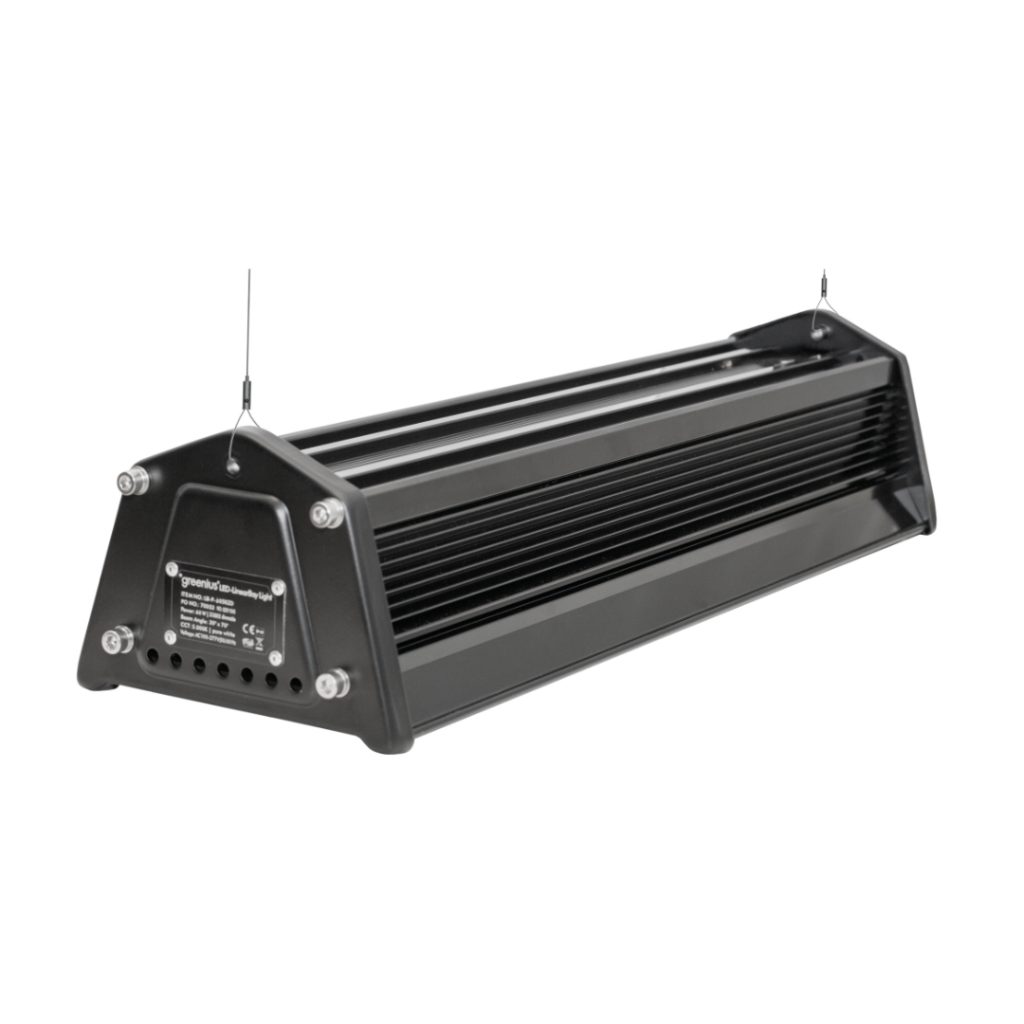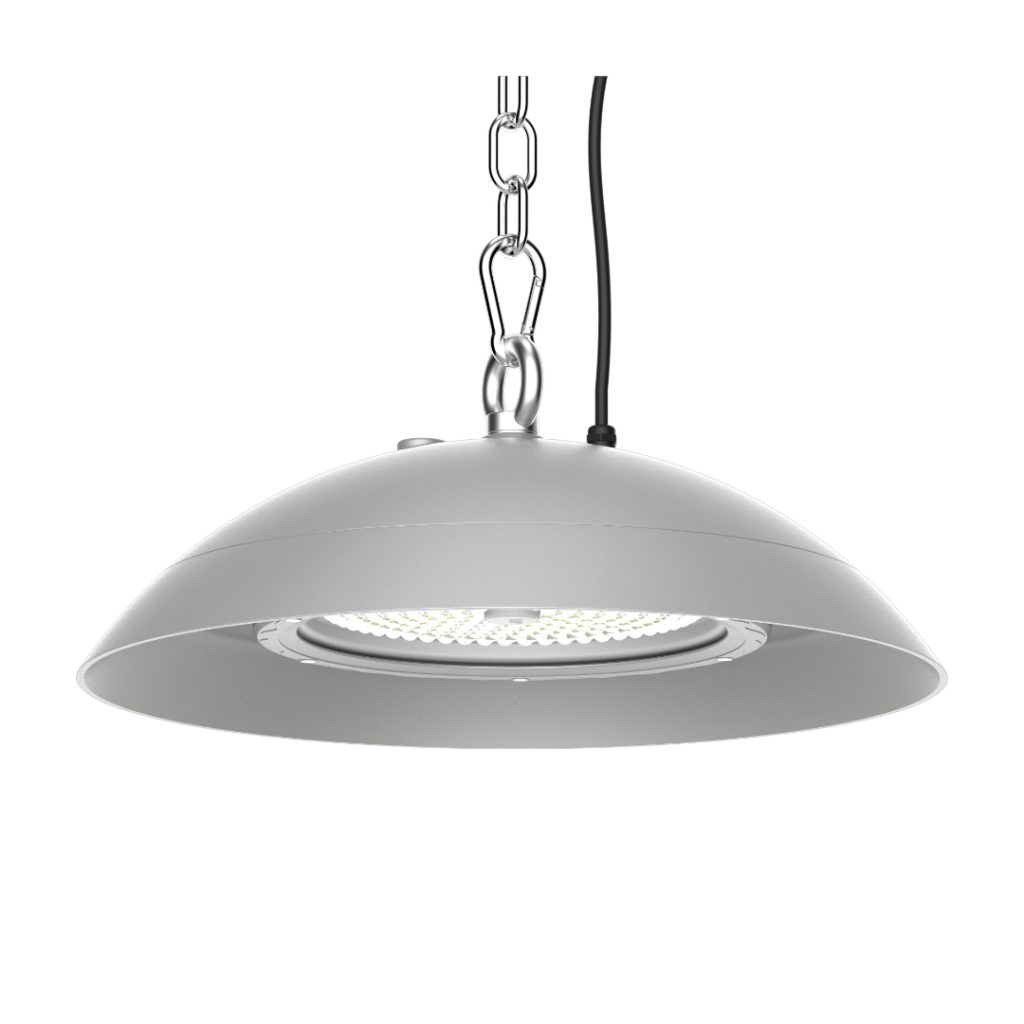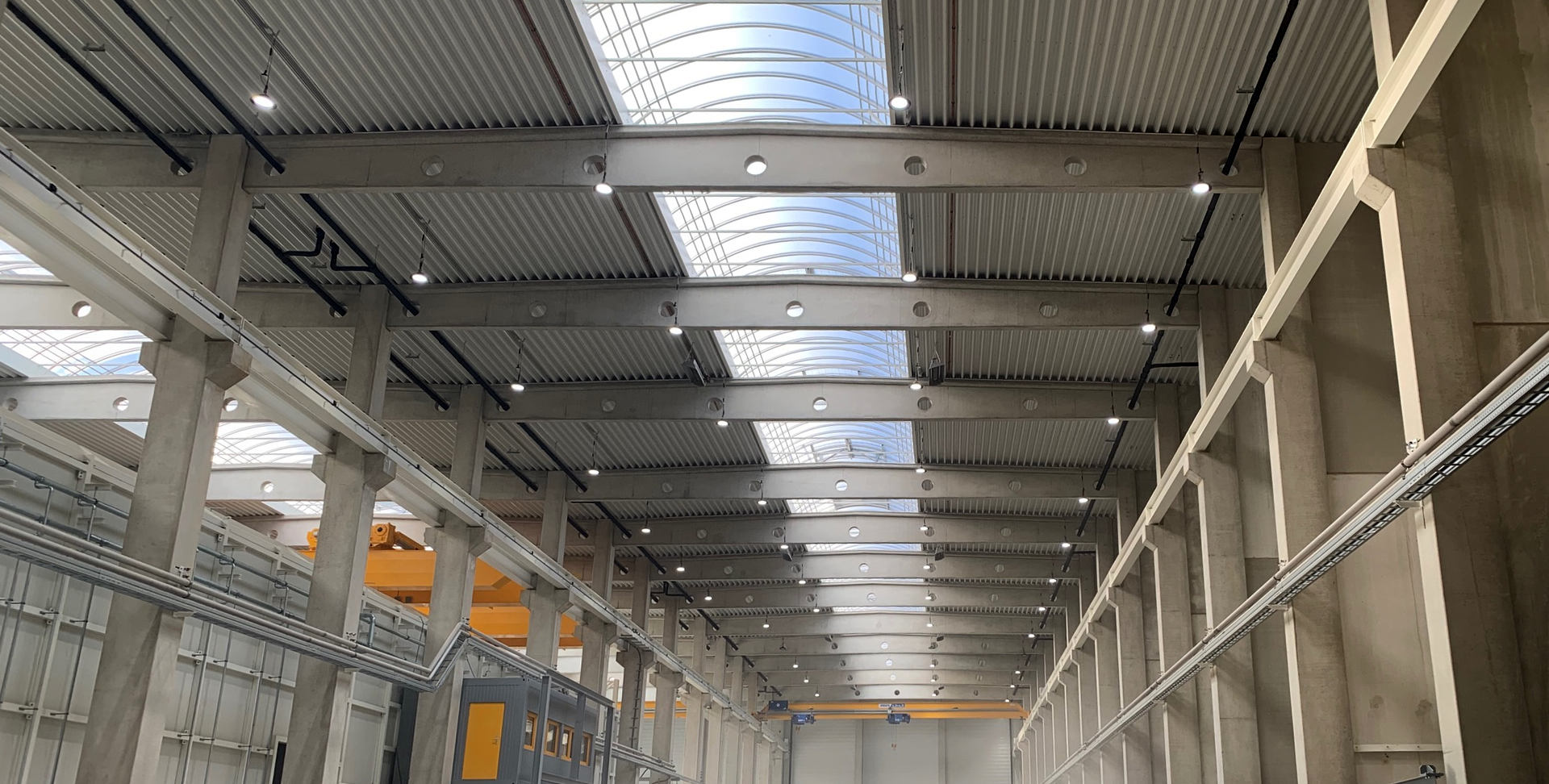
INDUSTRIAL LIGHTING
Whether production or storage areas – greenius® offers a comprehensive range of high-performance and long-life LED luminaires. Control technology for daylight and presence offer further energy-saving potential and control your light efficiently and intelligently.
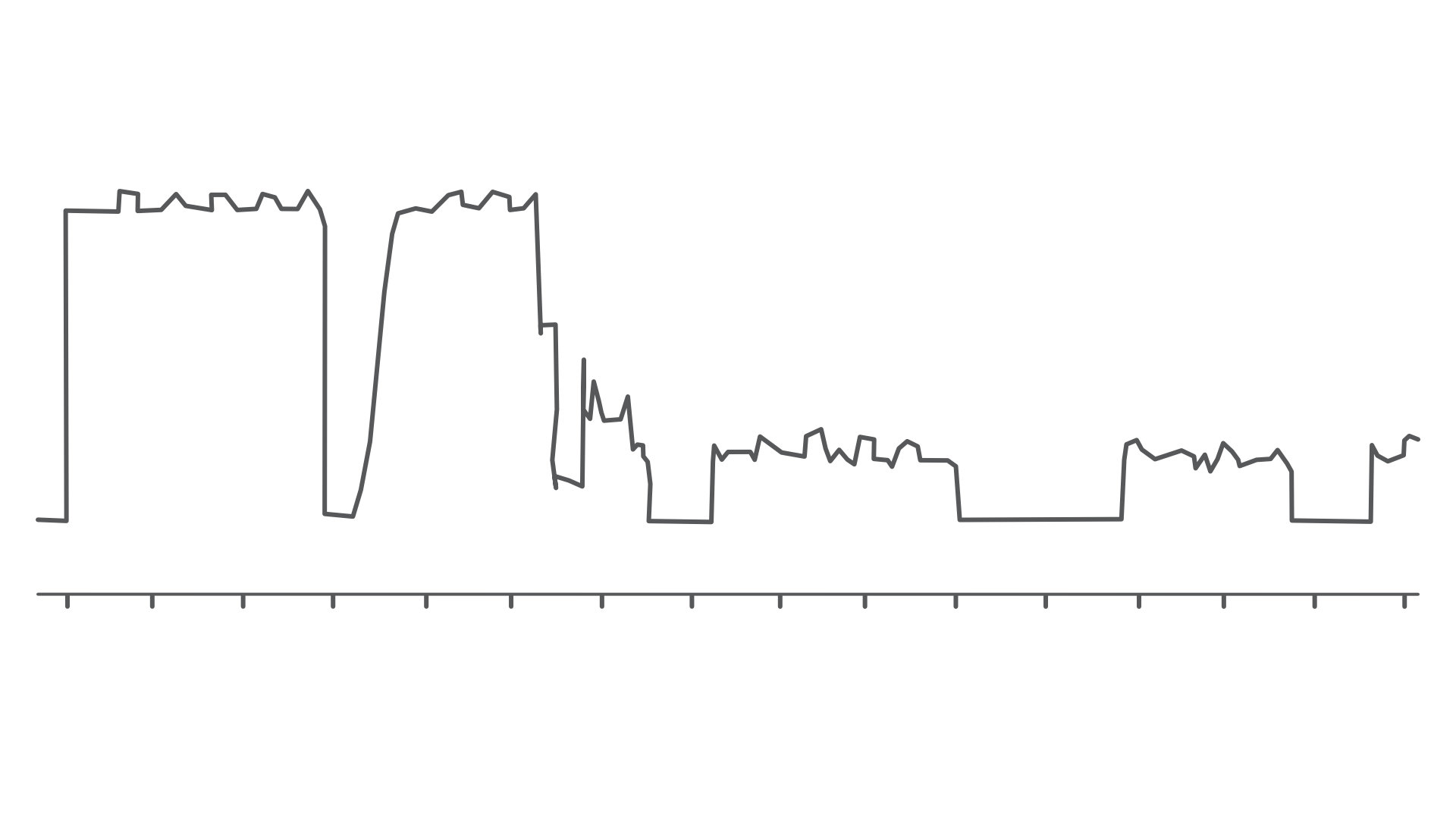
EXAMPLE FROM THE PRACTICE
Before and after comparison from practice
STORAGE AREA
Classic example from practice: The lighting situation of a storage area is insufficient according to the workplace guidelines (ASR). The company works in three shifts (6-day week). Conversion to greenius® LED achieves approx. 400 % more luminous intensity. An intelligent DALI control with presence detectors ensures a savings potential of 14,700 euros and a ROI after 26.9 months (incl. installation) in the 5-year profitability analysis.
INITIAL SITUATION:
- 6 aisles of 7 luminaires each = 42 luminaires (10 of which are defective)
- Type of luminaire: 2 T8 fluorescent tubes each 58 W plus ballast
- Illuminance: Ø 100 lux
- No lighting control
- Total system power: 4,060 watts
AFTER CONVERSION:
- 6 aisles of 3 luminaires each = 18 luminaires.
- Luminaire type: LB-PRO warehouse spotlight, 150 W, beam angle 30 x 70°.
- Illuminance: Ø 400 lux (ASR-compliant, levelled at Ø 200 lux)
- DALI-controlled with B.E.G. presence detector
- Total system power: 792 watts (at Ø 200 lux)
PRODUCTS IN USE
POWER CONSUMPTION: BEFORE > AFTER
The consumption figures shown in the comparison graphs are extracts from the customer’s energy performance records (power metering).
Radiation characteristics
Probably the most important advantage of modern LED lighting technology over conventional lighting is the possibility of directing the light by means of optics and directing it to where the light is actually needed.
A positive side effect: if the light is directed sensibly, the lighting installation requires considerably less luminosity (lumens) – and thus also less energy!
When implementing lighting projects, it is therefore primarily a matter of determining the optimal beam characteristics – lumens and efficiency play a subordinate role for the time being.
Click through the overview of our selected optics and learn more about the corresponding beam characteristics. Switch on the lighting and, if you wish, additionally “a thermal image” with the false colour display for lux evaluation.
Of course, we will be happy to assist you in choosing the optimal beam angle for your lighting project.

The luminous intensity distribution curve (LVK) shows the expected light distribution (radiation characteristics) by means of lines. From the front and rotated 90° from the side.




The luminous intensity distribution curve (LVK) shows the expected light distribution (radiation characteristics) by means of lines. From the front and rotated 90° from the side.




The luminous intensity distribution curve (LVK) shows the expected light distribution (radiation characteristics) by means of lines. From the front and rotated 90° from the side.




The luminous intensity distribution curve (LVK) shows the expected light distribution (radiation characteristics) by means of lines. From the front and rotated 90° from the side.




The luminous intensity distribution curve (LVK) shows the expected light distribution (radiation characteristics) by means of lines. From the front and rotated 90° from the side.




